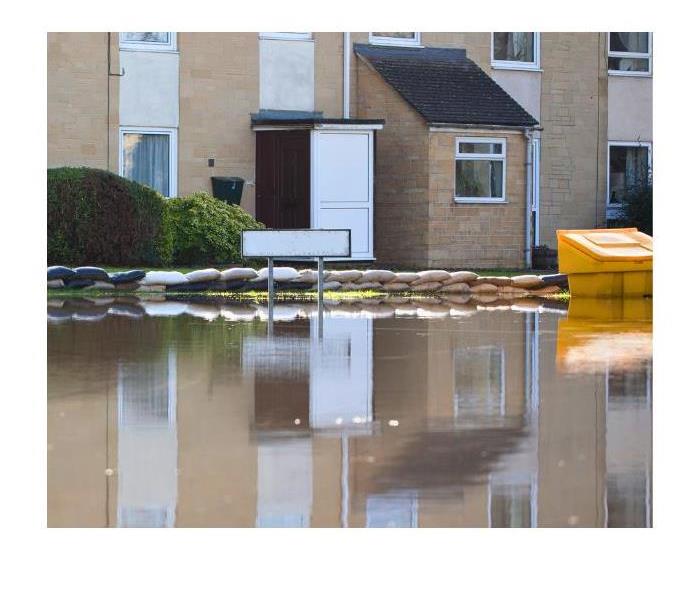Safeguarding Your Home: 7 Essential Tips to Mitigate Flooding Risks in Colorado Springs
5/18/2024 (Permalink)
Nestled in the scenic landscapes of Colorado, Colorado Springs offers residents a blend of natural beauty and outdoor adventures. However, along with its picturesque surroundings comes the risk of flooding, particularly during heavy rainstorms or rapid snowmelt. Protecting your home from flooding is paramount to safeguarding your family and property. Here are seven essential tips to help reduce flooding risks in your Colorado Springs home.
1. Understand Your Property's Flood Risk:
Before implementing any flood mitigation measures, it's crucial to understand your property's flood risk. FEMA's Flood Insurance Rate Map (FIRM) provides valuable information about flood zones in your area. Additionally, consulting with local authorities or hiring a professional can help assess your property's susceptibility to flooding. Armed with this knowledge, you can tailor your flood preparedness efforts accordingly.
2. Elevate Vulnerable Utilities:
Electrical systems, HVAC units, and other utilities are vulnerable to water damage during flooding. Elevating these critical components above flood levels can minimize the risk of costly repairs and potential safety hazards. Consider installing electrical outlets and circuit breakers at higher elevations and relocating HVAC units to elevated platforms. Elevating utilities not only protects your home but also ensures essential services remain operational during and after a flood event.
3. Invest in Flood Barriers and Sealants:
Sealing your home against water intrusion is an effective way to mitigate flooding risks. Installing flood barriers such as flood gates, sandbags, or inflatable barriers can prevent water from entering vulnerable entry points like doors, windows, and vents. Additionally, applying waterproof sealants to basements, walls, and foundations can reinforce your home's defenses against water seepage. Regularly inspect and maintain these barriers and sealants to ensure they remain effective over time.
4. Implement Landscape Grading and Drainage Solutions:
Proper landscape grading and drainage are essential for directing water away from your home's foundation. Sloping the ground away from your property and installing French drains, swales, or rain gardens can help channel water away from vulnerable areas. Clearing debris from gutters, downspouts, and storm drains is also critical to prevent water buildup and potential blockages. By addressing drainage issues on your property, you can reduce the likelihood of water pooling around your home during heavy rainfall.
5. Install Sump Pumps and Backup Systems:
Sump pumps are invaluable tools for removing excess water from basements and crawl spaces. Installing a reliable sump pump with a battery backup system can provide an added layer of protection against flooding. In the event of a power outage, the backup system ensures continuous operation, preventing water damage even during emergencies. Regular maintenance, including testing the pump and replacing batteries as needed, is essential to ensure optimal performance when you need it most.
6. Elevate or Waterproof Basement Structures:
Basements are particularly susceptible to flooding due to their below-ground location. Elevating basement floors above the flood level or installing waterproofing measures such as sump pumps, interior drainage systems, and sealants can help protect valuable belongings and structural integrity. Consider retrofitting basement windows with flood vents to equalize water pressure and prevent hydrostatic pressure buildup during floods. Investing in basement waterproofing not only safeguards your home but also enhances its resale value and livability.
7. Obtain Flood Insurance Coverage:
Despite your best efforts to mitigate flood risks, unforeseen circumstances can still lead to water damage. Securing adequate flood insurance coverage provides financial protection against losses resulting from flooding events. While standard homeowners' insurance policies typically exclude flood damage, obtaining a separate flood insurance policy through the National Flood Insurance Program (NFIP) or private insurers can offer peace of mind and financial security. Review your insurance coverage annually to ensure it adequately reflects your property's flood risk and coverage needs.
In Colorado Springs, where the beauty of nature coexists with the threat of flooding, taking proactive measures to protect your home is essential. By understanding your property's flood risk, elevating utilities, investing in flood barriers and sealants, implementing landscape grading and drainage solutions, installing sump pumps and backup systems, waterproofing basement structures, and obtaining flood insurance coverage, you can significantly reduce the impact of flooding on your home and family. Remember, preparedness is key to weathering the storm and safeguarding what matters most.




 24/7 Emergency Service
24/7 Emergency Service
